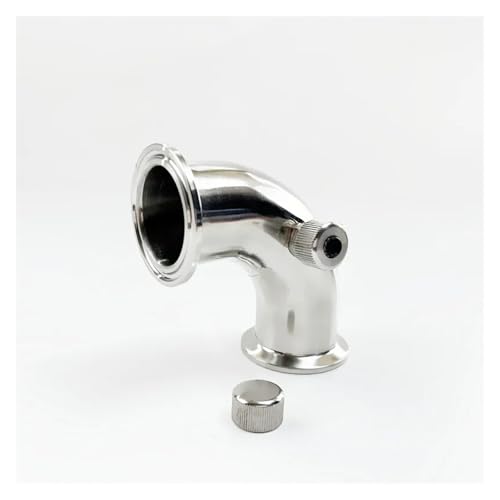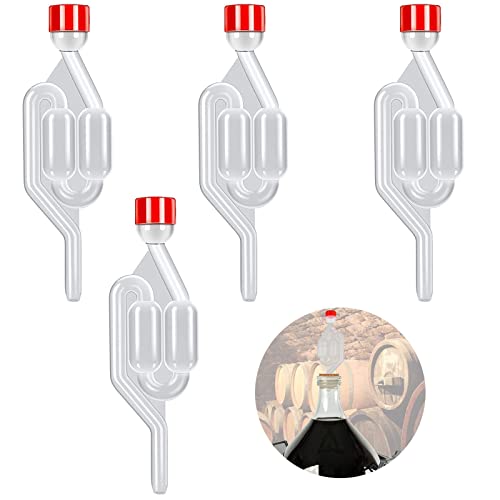You are using an out of date browser. It may not display this or other websites correctly.
You should upgrade or use an alternative browser.
You should upgrade or use an alternative browser.
lactobaccilus
- Thread starter robsan77
- Start date

Help Support The Homebrew Forum:
This site may earn a commission from merchant affiliate
links, including eBay, Amazon, and others.
jonnymorris
Landlord.
- Joined
- Nov 19, 2011
- Messages
- 1,698
- Reaction score
- 10
He's in star wars, I think.

£13.58
Banziaju Wine Making Supplies, 18" Auto Siphon Hose For Water Homebrew Siphon Pump With Tubing And Clamp Clear Wine Siphon For Beer Wine Making Kit
Jian Shi Xian Chao Mei Shang Mao You Xian Gong Si

£10.99
£14.99
Brew it Yourself: Make Your Own Beer, Wine, Cider and Other Concoctions
ST Bookstores

£14.76
Digital Temperature Watch Heating Thermometer Home Brewing Tools for Wine Bottle
B&D DIRECT STORE

£11.95
£14.99
WATER COMPREHENSIVE GUIDE (Brewing Elements): A Comprehensive Guide for Brewers
Amazon.co.uk

£437.77
HMCOCOOFM 4L 4" OD119mm * 1.5" OD50.5mm Copper Onion Head For Homebrewing,Thickness 1.5mm (With Thermometer)
weifangguanhuawangluokejiyouxiangongsi

£63.25
HJBFZZBD Sanitary clamp 1.5" (38mm) FlangeOD50.5mm Sanitary Tri-Clamp 90-Degree Pipe With Middle Nipple And Electronic Thermometer, Stainless Steel 304 Home brewing(Without Thermometer)
DAN CHENG XIAN PENG SHI DA SHANG MAO DIAN

£23.75 (£25.45 / 75 cl)
Kinsale Mead Co. Atlantic Dry Mead 70cl, Light, Off Dry, Refreshingly Different Award-Winning Honey Mead, 12% ABV
Amazon.co.uk

£73.98
Sanitary clamp 2" (51mm) OD64mm Sanitary Tri-Clamp 90-Degree Pipe With Nipple And Electronic Thermometer, Stainless Steel 304 Home brewing(Without Thermometer)
DAN CHENG XIAN PENG SHI DA SHANG MAO DIAN

£14.70 (£148.15 / kg)
Spicy World Tartaric Acid Pure 3.5oz - Top Grade, USP Certified, Food Grade, Vegan - Perfect for Wine Making, Mead
Amazon US

£15.96
£16.99
The Brew Your Own Big Book of Clone Recipes: Featuring 300 Homebrew Recipes from Your Favorite Breweries
Amazon.co.uk

£63.25
Sanitary clamp 1.5" (38mm) OD50.5mm Sanitary Tri-Clamp 90-Degree Pipe With Nipple And Electronic Thermometer, Stainless Steel 304 Home brewing(Without Thermometer)
DAN CHENG XIAN PENG SHI DA SHANG MAO DIAN

£14.25
£18.99
How to Brew: Everything You Need to Know to Brew Great Beer Every Time
Amazon.co.uk
Is it something the belgians use? Lambic? Not sure.
Lots of Americans going on about it for doing Belgian beers? However I have heard of several microbrewerys in the countryside being killed of by airborne yeast and animal farts (true) :hmm:
They are a major part of the lactic acid bacteria group, named as such because most of its members convert lactose and other sugars to lactic acid. In humans they are present in the vagina[2] and the gastrointestinal tract
Lots of Americans going on about it for doing Belgian beers? However I have heard of several microbrewerys in the countryside being killed of by airborne yeast and animal farts (true) :hmm:
artiums_enteri
Regular.
- Joined
- Jan 18, 2012
- Messages
- 401
- Reaction score
- 2
Lactobacillus is a wild yeast that is very prominent on fruit (at least in my area.) it is a microbe that can consume other more complex sugars that brewer's yeast can not munch on. Unlike brewer's yeast, it can also mate.
Lacto was feared by many craft breweries in the states for a long time because the flavor it creates is very sour. It is also almost impossible to kill. Once the bug infects any plastic equipment it is there to stay. Cross contamination is a big problem with it as well.
Like a few other wild yeasts, lacto has been studied, and brought under control. With proper inoculation and use it can make some really fantastic and complex beers. Usually it will be introduced to the fermenter after the sachramycies has finished, and been harvested. The beer with lacto will then be set to age for a couple years to mellow out the sour notes into more fruity, musky, and a little sour.
Lacto was feared by many craft breweries in the states for a long time because the flavor it creates is very sour. It is also almost impossible to kill. Once the bug infects any plastic equipment it is there to stay. Cross contamination is a big problem with it as well.
Like a few other wild yeasts, lacto has been studied, and brought under control. With proper inoculation and use it can make some really fantastic and complex beers. Usually it will be introduced to the fermenter after the sachramycies has finished, and been harvested. The beer with lacto will then be set to age for a couple years to mellow out the sour notes into more fruity, musky, and a little sour.
There is an interesting test described in the latest basic brewing radio podcast that will help narrow it down.
I'd have to listen agin to get the detail but basically
Transfer a small amount of your cooled wort to a sterilised jar whilst racking to your FV.
Pitch your yeast in the FV as normal but do not pitch anything in the jar.
Sit the lid loosely on top of the jar or cover in foil.
Put it in the warmest part of your house - he suggests the top of your fridge where the warm air rises or an airing cupboard.
Check every morning and night for first signs of natural fermatation.
So the time it takes for fermentation to start tells you how sanitary your process is up to the point you pitch yeast. IE how sanitary your cooling and transfer are and process is.
If you see activity within the 1st 24 hrs you have a big problem
1-2 days - you need to look at your process, it can be better and cleaner.
2 days + is normal
I'd have to listen agin to get the detail but basically
Transfer a small amount of your cooled wort to a sterilised jar whilst racking to your FV.
Pitch your yeast in the FV as normal but do not pitch anything in the jar.
Sit the lid loosely on top of the jar or cover in foil.
Put it in the warmest part of your house - he suggests the top of your fridge where the warm air rises or an airing cupboard.
Check every morning and night for first signs of natural fermatation.
So the time it takes for fermentation to start tells you how sanitary your process is up to the point you pitch yeast. IE how sanitary your cooling and transfer are and process is.
If you see activity within the 1st 24 hrs you have a big problem
1-2 days - you need to look at your process, it can be better and cleaner.
2 days + is normal
Your going to have to look at a few things here. Where are you brewing, where are you fermenting, where is your malt stored are three big ones. Its unlikely the lacto spores will be in the air at this time of year. Malt and particularly malt dust carry a lot of infections and this is easily carried over.
How old is your FV and whats your cleaning method? Also if your not getting a vigorous boil and your copper is dirty then some bacteria can survive. Do you clean the tap on your copper? Its easily forgotten but running a few litres of wort out at flame out and recirculating should kill most things there.
my money is on a malt based source.
How old is your FV and whats your cleaning method? Also if your not getting a vigorous boil and your copper is dirty then some bacteria can survive. Do you clean the tap on your copper? Its easily forgotten but running a few litres of wort out at flame out and recirculating should kill most things there.
my money is on a malt based source.
robsan77
Landlord.
- Joined
- Jan 7, 2010
- Messages
- 1,748
- Reaction score
- 2
The batch I brewed after is fine so not the malt, was in a different fv tho. It was Irish ale yeast that I repitched from a previous brew. Could have been there. I always run several pints of boiling wort through the tap so not there.
artiums_enteri
Regular.
- Joined
- Jan 18, 2012
- Messages
- 401
- Reaction score
- 2
If you are boiling for at least 15 minutes (hopefully 60) everything on the hot side will be dead. There is always wild yeast living on your malt, but the runoff gets boiled, and the grain has no more contact with your wort once you've chilled. Just pay close attention to sanitation on the cold side and you should be good. A warning though if you are using a plastic fermenter and it gets lacto or any other infection it's just this side of impossible to get rid of it. This is the main reason I don't use plastic equipment.
When I said about the grain i mean if your brewing in the same room as the malt is being moved around in then the dust will stay in the air ect coming into contact with the fv or other post boil equipment.
Also Endospores can survive boiling at 100'c for many hours. Once the wort is cooled the bacteria can reform and bang, fermentation temp is perfect for growth.
Also Endospores can survive boiling at 100'c for many hours. Once the wort is cooled the bacteria can reform and bang, fermentation temp is perfect for growth.
artiums_enteri
Regular.
- Joined
- Jan 18, 2012
- Messages
- 401
- Reaction score
- 2
I have never met a brewer who boils his grain, so the endo is not an issue. (I could just imagine the tannin extraction associated with such a practice.) While the endosperm may still remain in tact the enzymes are killed at 170*, and microbes are dead at 212*.
As far as grain dust, it should be standard practice to keep sanitizer in the fermenter (usually star-San) until the wort is introduced. Anything that comes into contact with the wort on the cold side should be cleaned in PBW and tossed into the Star-San bucket killing any bacteria living on the equipment.
As far as grain dust, it should be standard practice to keep sanitizer in the fermenter (usually star-San) until the wort is introduced. Anything that comes into contact with the wort on the cold side should be cleaned in PBW and tossed into the Star-San bucket killing any bacteria living on the equipment.
artiums_enteri
Regular.
- Joined
- Jan 18, 2012
- Messages
- 401
- Reaction score
- 2
Whoops, I miss read that. But in the case of the endospore it will be destroyed by Star-San and or boiling for 15 minutes.
no endospores can survive boiling. Hence why UHT is only acceptable at or above 135'c.
Boiling in water for fifteen minutes will kill most vegetative bacteria and inactivate viruses, but boiling is ineffective against prions and many bacterial and fungal spores; therefore boiling is unsuitable for sterilization. However, since boiling does kill most vegetative microbes and viruses, it is useful for reducing viable levels if no better method is available. Boiling is a simple process, and is an option available to most people, requiring only water, enough heat, and a container that can withstand the heat; however, boiling can be hazardous and cumbersome.
Boiling in water for fifteen minutes will kill most vegetative bacteria and inactivate viruses, but boiling is ineffective against prions and many bacterial and fungal spores; therefore boiling is unsuitable for sterilization. However, since boiling does kill most vegetative microbes and viruses, it is useful for reducing viable levels if no better method is available. Boiling is a simple process, and is an option available to most people, requiring only water, enough heat, and a container that can withstand the heat; however, boiling can be hazardous and cumbersome.
artiums_enteri
Regular.
- Joined
- Jan 18, 2012
- Messages
- 401
- Reaction score
- 2
I see, so the Star-San will still do the trick and pressure cooking seems to still be a feasible way to sterilize equipment such as that used in yeast culturing.
I understand what you are saying now; thank you for the clarification. One thing I'm unsure of though is the "boiling could be hazardous" statement. A vital part of brewing is boiling wort for a minimum of 60 minutes, 90 for lagers. I'm missing the hazardous part.
I agree boiling is about the most inefficient way to sanitize (in the US brewing industry we can not claim anything is sterilized,) for once you boil the gear it is very easy for microbes to be reintroduced once the equipment cools. If the brewer is using a non-rinse final acid rinse as is the most common practice, everything will be killed that could pose a problem to the wort.
If the lag time between the wort entering the fermenter and the pitched yeast taking off is the problem then perhaps the pitch rate and starter quality needs to be examined. There should really be about an eight hour lag time before we notice signs of active fermentation. Prior to active fermentation the yeast is procreating creating more yeast for the environment in which they have just been inoculated. If all has gone well the sachramycies should be the big bug on the block and rob any foreign microbe of resources needed to survive.
I understand what you are saying now; thank you for the clarification. One thing I'm unsure of though is the "boiling could be hazardous" statement. A vital part of brewing is boiling wort for a minimum of 60 minutes, 90 for lagers. I'm missing the hazardous part.
I agree boiling is about the most inefficient way to sanitize (in the US brewing industry we can not claim anything is sterilized,) for once you boil the gear it is very easy for microbes to be reintroduced once the equipment cools. If the brewer is using a non-rinse final acid rinse as is the most common practice, everything will be killed that could pose a problem to the wort.
If the lag time between the wort entering the fermenter and the pitched yeast taking off is the problem then perhaps the pitch rate and starter quality needs to be examined. There should really be about an eight hour lag time before we notice signs of active fermentation. Prior to active fermentation the yeast is procreating creating more yeast for the environment in which they have just been inoculated. If all has gone well the sachramycies should be the big bug on the block and rob any foreign microbe of resources needed to survive.
Some bacteria are so resistant. Some can even resist commercial cleaning products. I think the hazard stems from the its a load of very hot stuff.
Interesting that you say you only boil for 60mins for ale but 90 for lager...not the right section I know but why? I boild for 70-80mins regardless of what style it is. Id have gone for less on a lager to prevent more maillard products (the browning you get when you cook meat or bread ect) being produced.
Interesting that you say you only boil for 60mins for ale but 90 for lager...not the right section I know but why? I boild for 70-80mins regardless of what style it is. Id have gone for less on a lager to prevent more maillard products (the browning you get when you cook meat or bread ect) being produced.
artiums_enteri
Regular.
- Joined
- Jan 18, 2012
- Messages
- 401
- Reaction score
- 2
You are right on target with the mallaiard reaction. The standard amongst craft and home brewers over here has turned to 90 minutes usually starting the hop schedule at 60. For ales it's not really needed, and I personally view it as a waste of gas, but for lagers it is to boil off the excess sulfides such as DMS, DMSO, DDMS that are not detrimental to an ale being more estery, but in a lager that is supposed to be crisp, clean, and delicate they can really throw in some off flavors.
The bacteria discussion is intriguing. What do you guys normally use to sanitize and clean your equipment? As I stated we are accustomed to using PBW or oxyclean free for soaking our gear and sanitizing with Star-San.
The bacteria discussion is intriguing. What do you guys normally use to sanitize and clean your equipment? As I stated we are accustomed to using PBW or oxyclean free for soaking our gear and sanitizing with Star-San.
Similar threads
- Replies
- 8
- Views
- 321
- Replies
- 39
- Views
- 1K
- Replies
- 14
- Views
- 1K



















![BREWING THERMOMETER STICKERS ACCURATELY MONITOR FERMENTING BEER & WINE LIQUID TEMPERATURES 5PCS HOME BREW SPIRITS WINE LCD ADHESIVE [US]](https://m.media-amazon.com/images/I/311DDjo2X3L._SL500_.jpg)








